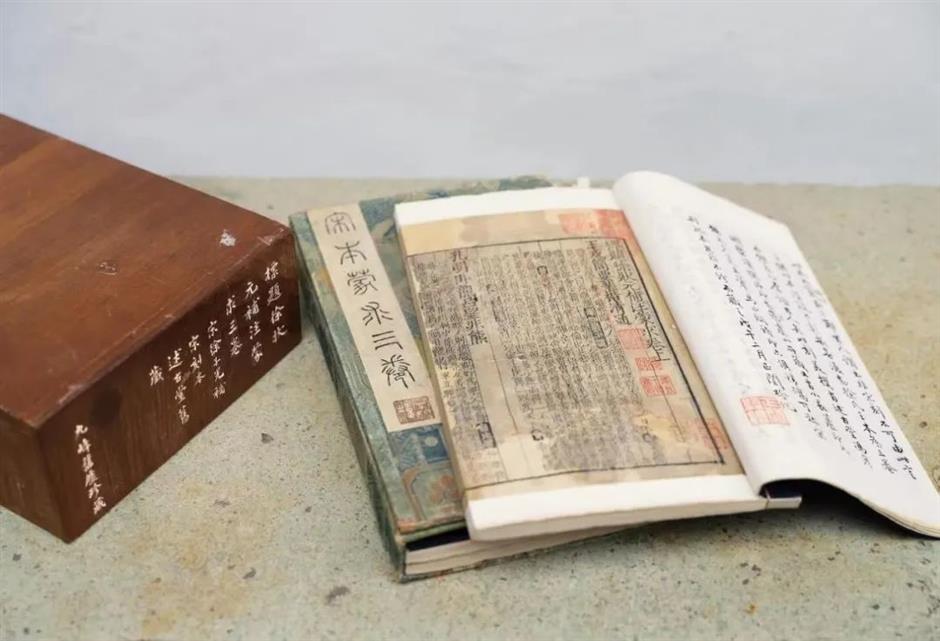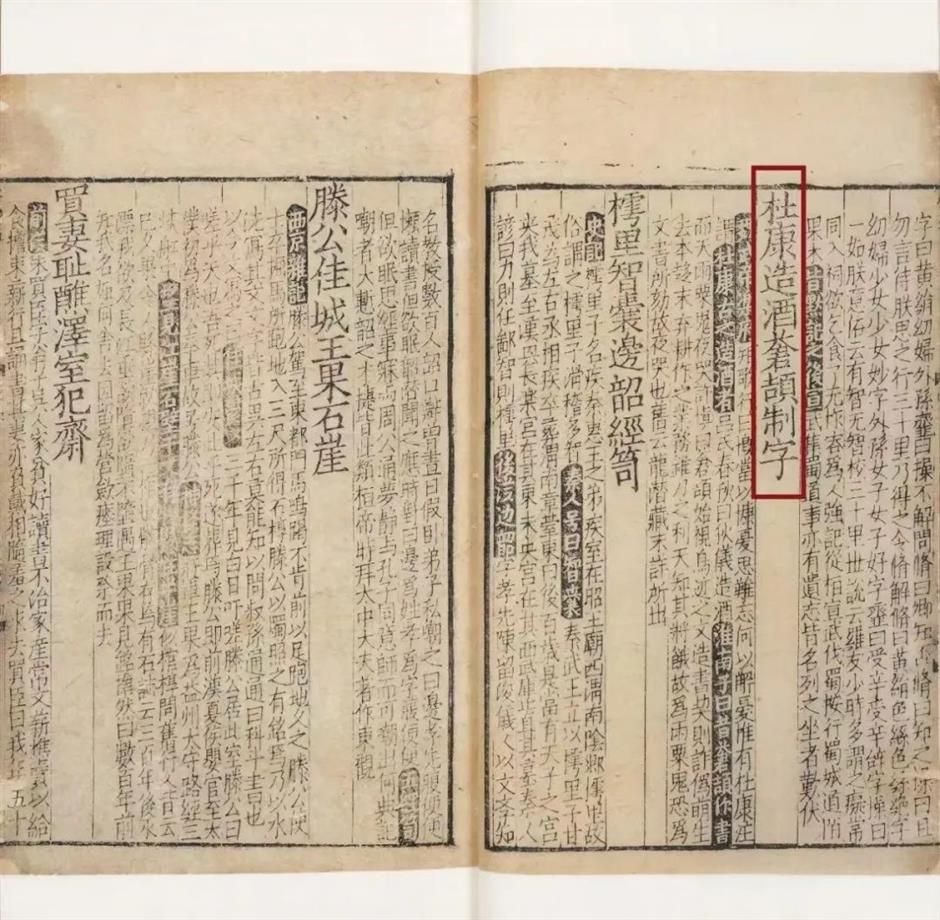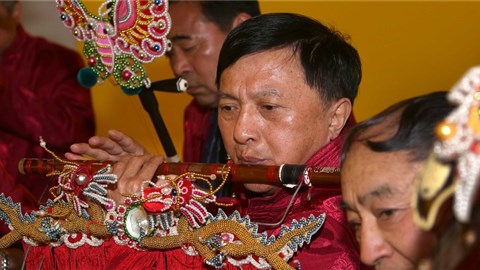Xiling Seal Society's auction preview features rare edition of 'Meng Qiu'

The Song Dynasty version of the book "Meng Qiu (蒙求)" is believed to be the best preserved.
The prestigious Xiling Seal Society will host an auction preview from December 29 to 31 at the Hangzhou International Conference Center. Visitors can view salient items, including a Song Dynasty (960-1279) edition of the book "Meng Qiu (蒙求)."
This version is believed to be the earliest found and best preserved, printed during the Song Dynasty when Hangzhou was the center of the national book printing industry.
"Meng Qiu" is a children's literacy textbook first compiled by Li Han during the Tang Dynasty (AD 618-907). According to archives, it recorded over 600 stories about celebrities and historic events.
Generally, printers would revise the book a few times before reprinting. They might delete some sentences or add a few comments, which to some extent reflected changes in thoughts.
The Song Dynasty edition of the book was enriched with commentary by Xu Ziguang, a leading scholar of the era. The final collector of the book was Wang Shoushan (1873-1938), a renowned bibliophile in the early 20th century China.
Ancient books have always been cherished by Chinese historians for their documentation of the country's history, literature, medical science, agriculture and social development. Those dating back thousands of years are especially valued by museums and private bibliophiles, as they also reflect the evolution of the country's printing history.
When Hangzhou became the capital during the Southern Song Dynasty (1127-1279), China's printing industry reached its zenith in history. However, many ancient books were destroyed during the ensuing wars, making the surviving ones even more valuable.
As a result, the Song Dynasty editions are highly sought after by collectors due to their superb binding and smooth printing techniques, which are hallmarks of fine books from that era.

"Meng Qiu" is a children's literacy textbook first compiled by Li Han during the Tang Dynasty (AD 618-907).
In history, Song Dynasty books were also the paradigms of book making in the Ming (1368-1644) and Qing (1644-1911) dynasties, as well as the Republic of China (1912-1949).
For instance, Ding Shen and Ding Bing brothers were book publishing moguls and famous bibliophiles in the Qing Dynasty, collecting thousands of Song Dynasty books. In a bid to preserve ancient books, the brothers built the Baqianjuan (Eight Thousand Scrolls) Pavilion in Hangzhou.
At present, the most popular font used by Chinese people is the Song typeface, a distinct style of regular script with orderly, straight strokes formed in the Song Dynasty books. That in return reflects the prominent printing techniques of that period.
The quality of an ancient book was linked with the cost from a printer; the more he invested, the better a book would be. Usually, top-notch books mainly came from the imperial court, which usually established a specific department to print books.
The Song Dynasty was the exception. Throughout history, ancient Hangzhou was home to numerous top-flight bookstores that privately printed premium books. These books have been highly sought after by connoisseurs across different dynasties.
Hangzhou's glory days of bookmaking continued during the Qing Dynasty. Private libraries were set up across the city and a myriad of ancient books were protected. People realized that ancient archives were cultural treasures to be passed down to future generations.
Thus, the Wenlan Pavilion was built in the early Qing Dynasty on the city's Solitary Hill. The pavilion was destroyed during the Taiping Rebellion (1850-64), although one-quarter of its collection survived. The pavilion was rebuilt in 2013 and reopened to visitors.
The Qing Dynasty royal court established pavilions to preserve the "Si Ku Quan Shu," or "The Complete Library in Four Divisions." This was China's largest ancient encyclopedia, featuring four categories: Classics, History, Philosophy and Literature. Today, only four copies of the "Si Ku Quan Shu" exist in the country. The Wenlan Pavilion has one.
In recent years, the Zhejiang government has made extensive efforts to protect ancient archives. To preserve ancient texts and publications, the government built the Wenrun Pavilion in Hangzhou. It is a subvenue of the National Archives of Publications and Culture.
Today, Hangzhou still holds hundreds of thousands of woodblocks, ranging from the Song Dynasty to the Republic of China era. Professionals continue to comb through the woodblocks, which would be a major feature of the venue.
















